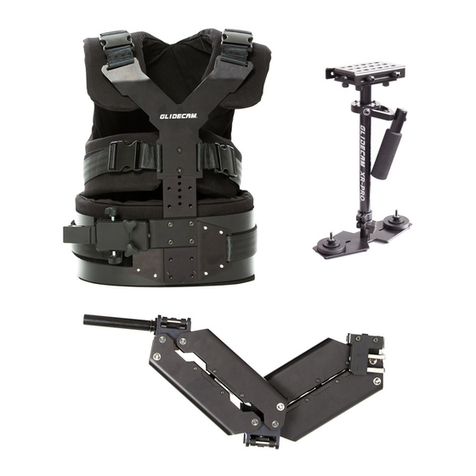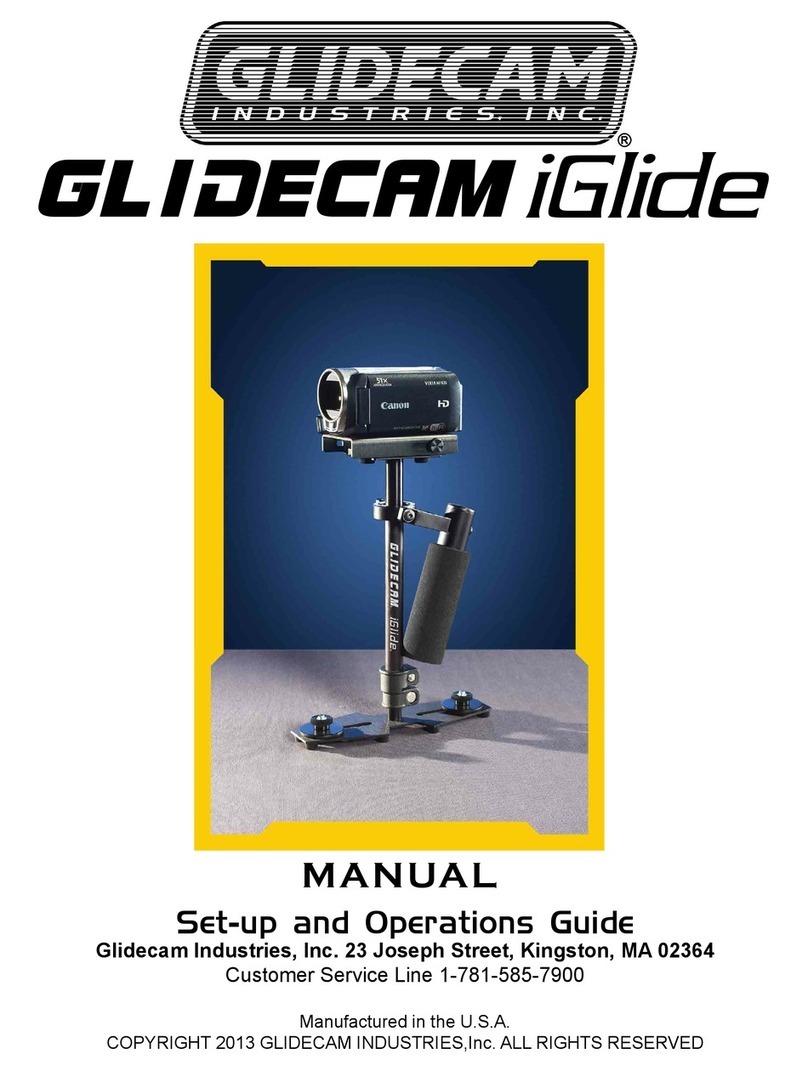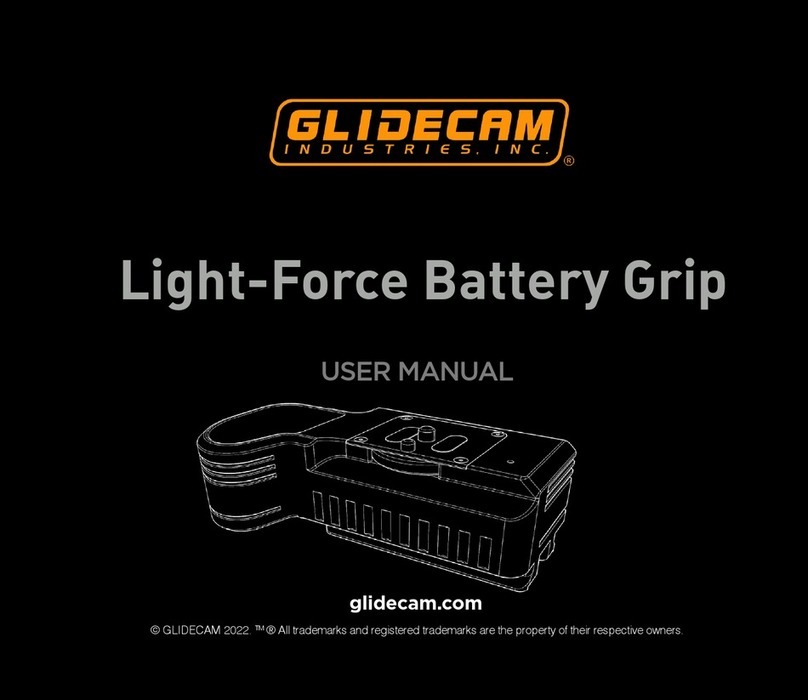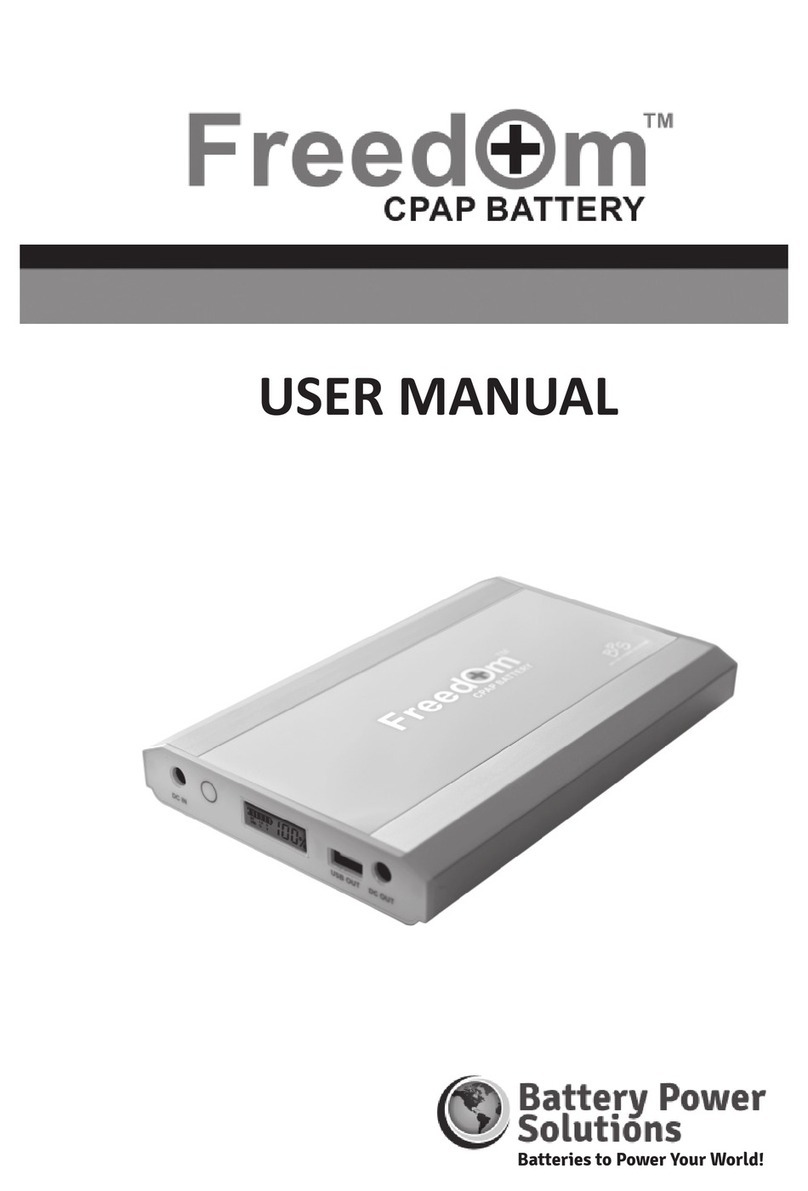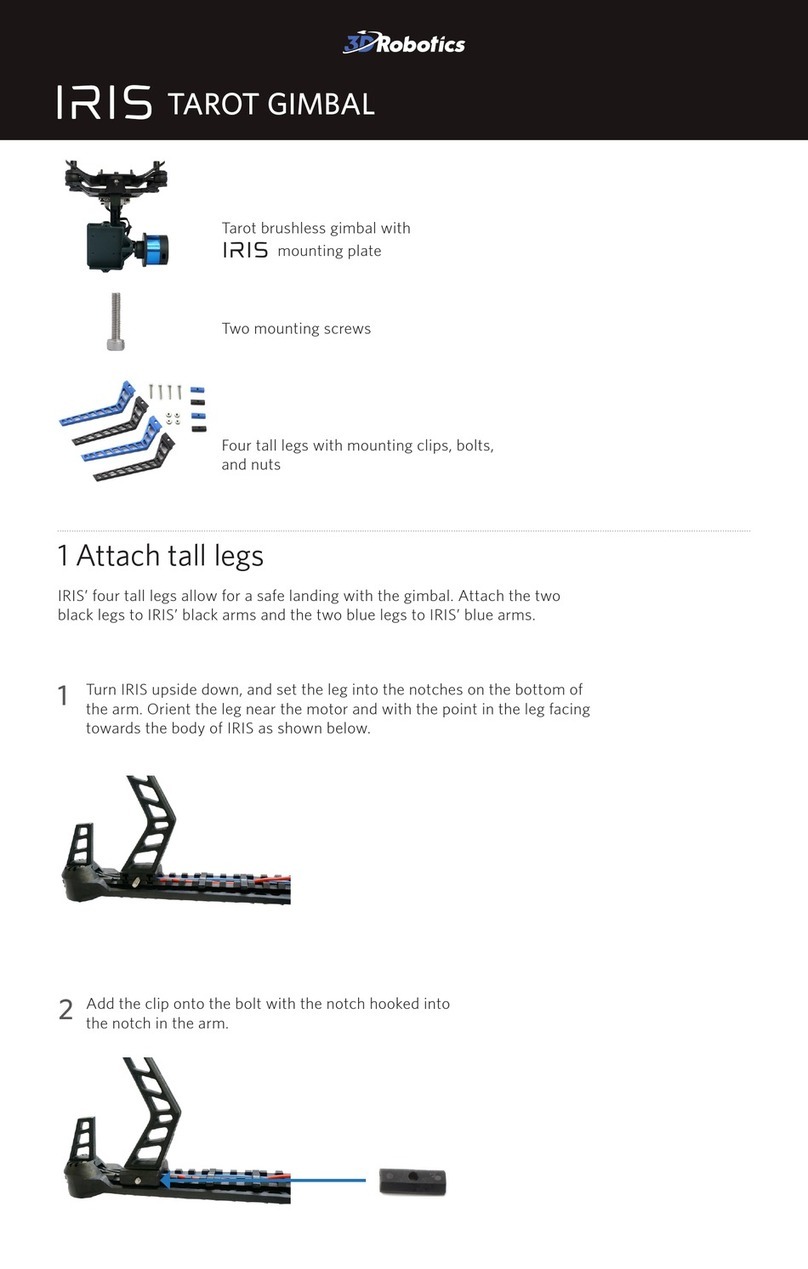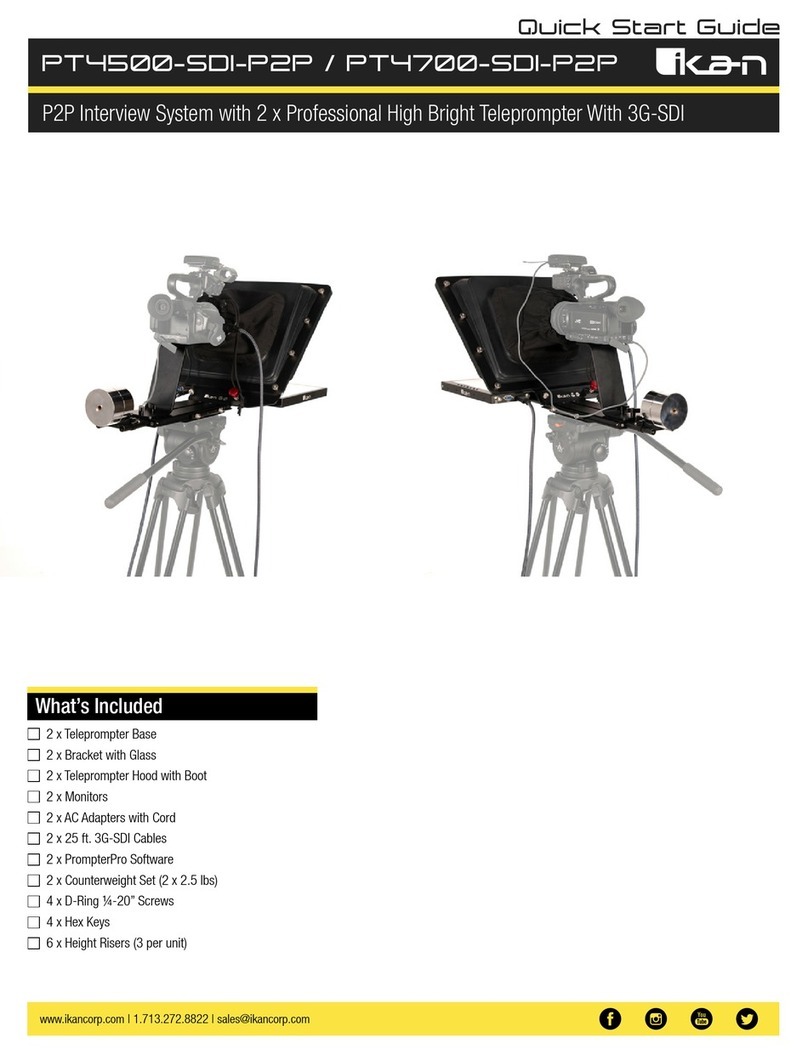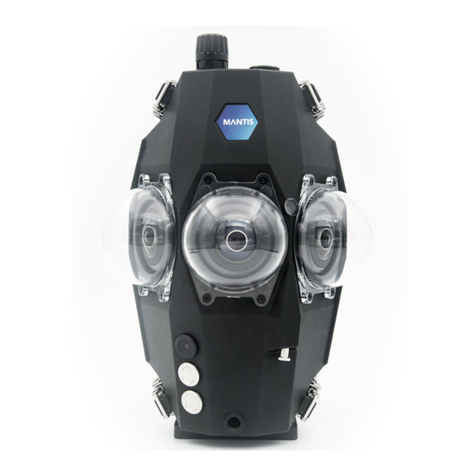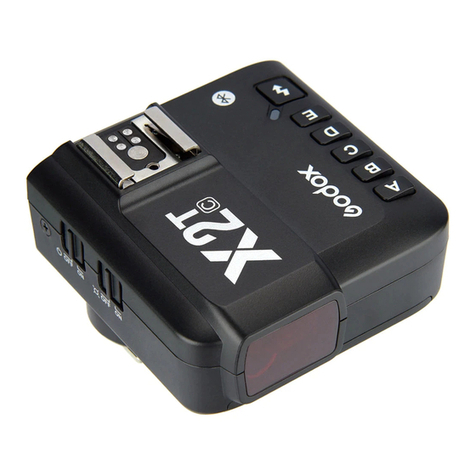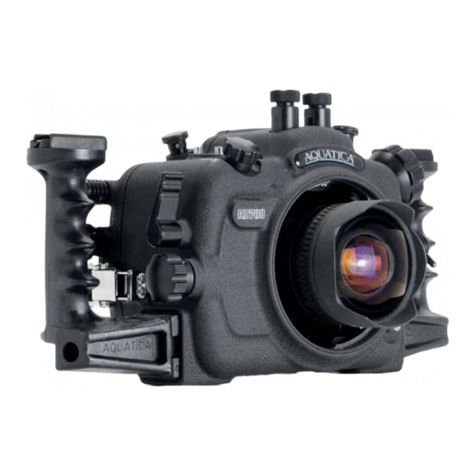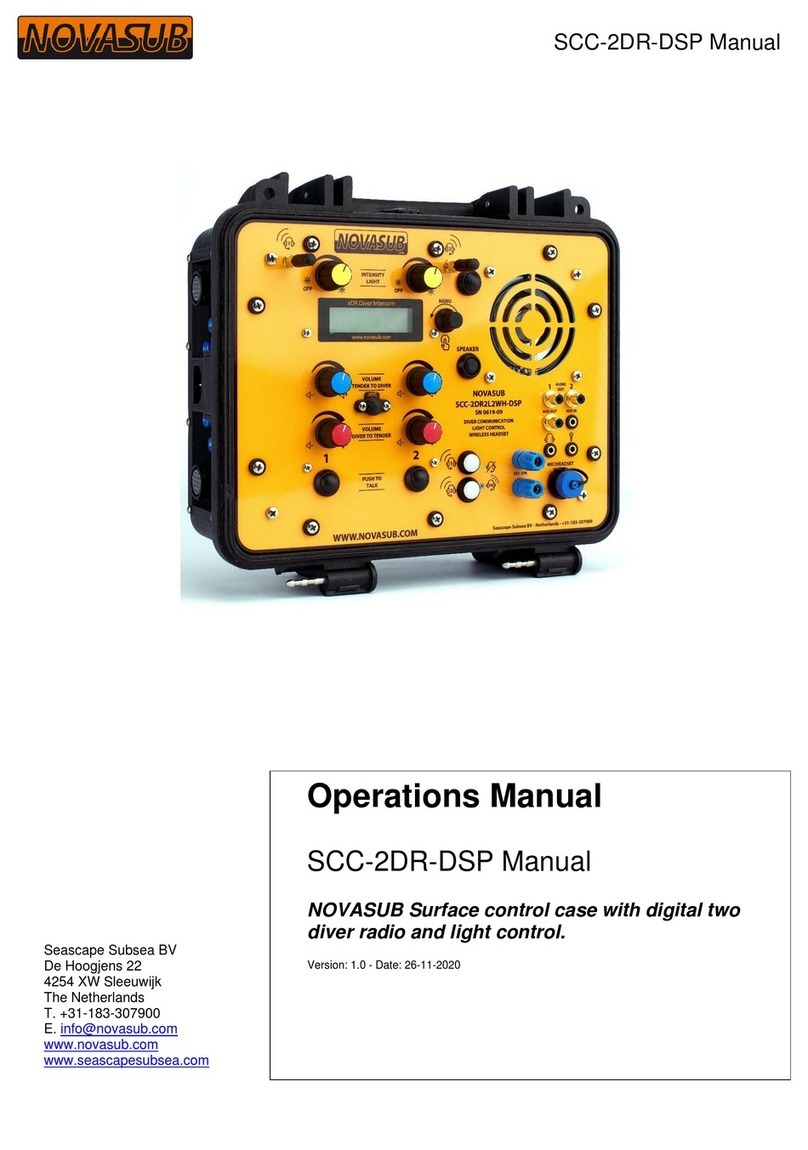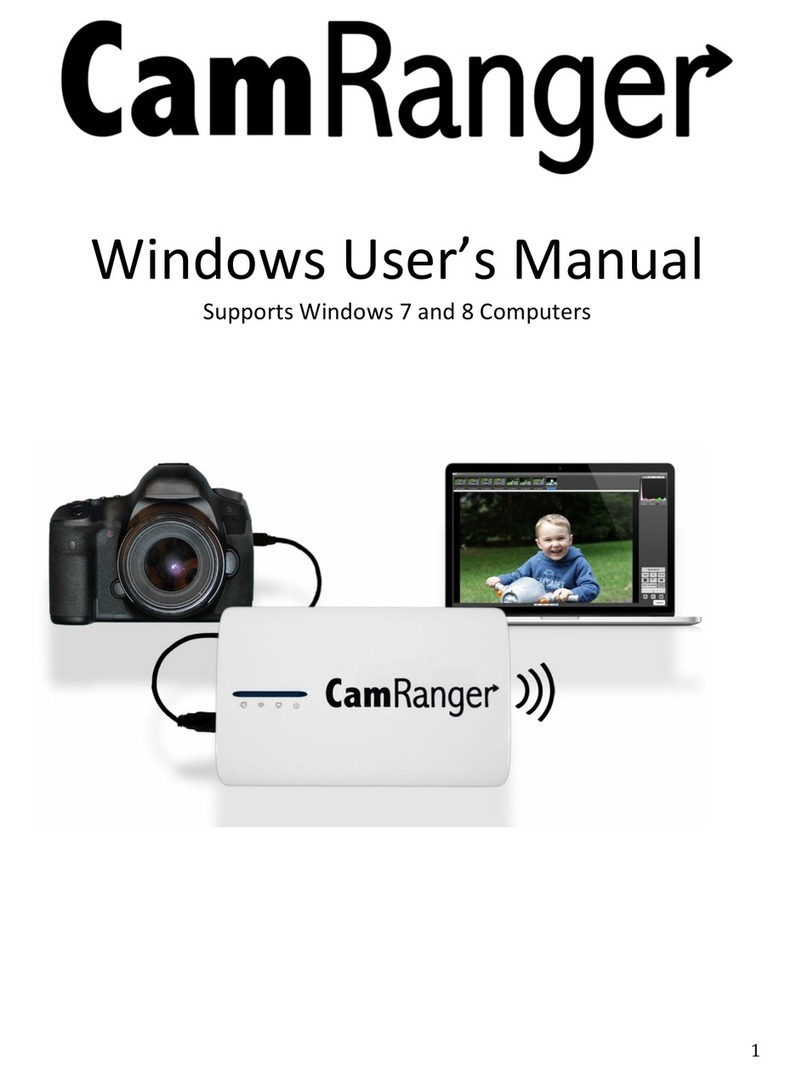Glidecam Industries Glidecam HD-1000 User manual

GLIDECAM
T h e H D S e r i e s
1 0 0 0 / 2 0 0 0 / 4 0 0 0
MANUAL
Set-up and Operations Guide
Glidecam Industries, Inc. 23 Joseph St, Kingston, MA 02364
Customer Service Line 1-781-585-7900
Manufactured in the U.S.A.
COPYRIGHT 2008-2009 GLIDECAM INDUSTRIES,INC. ALL RIGHTS RESERVED

2
table of contents
SECTION # PAGE #
1. Introduction
4
2. Glidecam HD-2000 Parts and Components
5
3. Assembling your Glidecam HD-2000
10
4. Attaching your camera to your Glidecam
18
5. Balancing your Glidecam HD-2000
21
6. Handling your Glidecam HD-2000
26
7. Operating your Glidecam HD-2000
27
8. Shooting Tips
29
9. Improper Techniques
30
10. Other Camera Attachment Methods
31
11. Professional Usage
31
12. Maintenance
32
13. Warnings
32
14. Warranty
15. Online Information
33
34

3
PLEASE NOTE
Since the Glidecam HD-2000 is essentially the same as the HD-1000 and the HD-4000,
this manual only shows photographs of the Glidecam HD-2000 being setup and used. The
Glidecam HD-1000 and the HD-4000 are just smaller and larger versions of the HD-
2000. When there is an important difference between the HD-2000 and the HD-1000 and
HD-4000 you will see it noted with a ***. Also, the words HD-2000 will be used for the
most part to include the HD-1000 and HD-4000 as well.

4
#1 Introduction
Congratulations on your purchase of a Glidecam HD-1000 and/or Glidecam HD-2000/Glidecam HD-
4000.
The amazingly advanced and totally re-engineered HD-Series from Glidecam Industries represents the
top of the line in hand-held Camera Stabilization.
The lightweight and state-of-the-art Glidecam HD-1000, HD-2000, and HD-4000 hand-held Camera
Stabilizers will transform your hard to watch, shaky camera footage into hypnotically smooth,
professional footage.
The Glidecam HD-Series offers advanced features and a degree of sophistication never before seen in a
line of hand-held Camera Stabilizers.
With the Glidecam HD-Series hand-held Stabilizers your camcorder seems to float, always balanced,
isolated from the undesirable motions of your hands. Now you are free to move with your camera –
panning, tilting, booming or running without any camera instability or shake.
The Glidecam HD-Series works so well that it allows you to shoot incredibly smooth and graceful shots
even while going to extremes like running up and down stairs or traveling over rugged terrain. When it
comes to normal shooting, like walking or moving the camera slowly around someone, the results are
equally magical.
Each HD-Series Stabilizer’s offset, foam-cushioned, Handle Grip is attached to a free floating, three axis
Gimbal. This allows your hand to move up and down and side-to-side, thereby isolating your hands’
unwanted motions from the camera. This up and down movement alleviates the bouncing, pogo-type
action often associated with our competitor’s system. This is because their handle is not designed to
have the beneficial ability to move up and down. This design feature, coupled with the overall higher
inertia of the HD-Series systems, produces superior stabilization when compared with our competition.
A unique and proprietary precision, three-axis Gimbal incorporates several adjustable axis convergence
controls. This allows all three axes to intersect for proper operational alignment.
A camera-mounting platform with a quick-release, no-tools drop on camera plate allows you to quickly
attach or remove your camera. Ergonomic control knobs allow quick, precise adjustment of the top
stage’s back and forth, and side-to-side movement. These controls allow you to adjust the camera’s
horizontal balance.
By varying the amount of Counter Weights on the Base Platform, or by changing the length of the no-
tools telescoping Central Post, you adjust the camera’s vertical balance. When balanced properly the
camera floats, ready for you to move into action.
The Glidecam HD Series Stabilizers offer unparalleled controllability and ease of use with their unique
rigid, yet dynamically adjustable, control and weight distribution surfaces. Setting up, controlling and
adjusting system balance is now quick and precise.

5
A unique and proprietary dynamic Base Platform can expand or contract. This allows you to easily
adjust the system’s dynamic balance or to increase or decrease the systems rotational pan inertia.
Shot after shot, move after move, the Glidecam HD-Series Stabilizers deliver beautifully smooth and
professional results. With the Glidecam HD-Series you no longer need a tripod or a dolly. All you need
is your creativity, imagination, and innovation!
Glidecam Industries is now becoming the choice of a generation. Glidecam makes your decisions
concerning camera stability and movement simple and easy. When you wish for your camera to glide
smoothly along your chosen path, simply rely, as so many have and still do, on using a Glidecam
Camera Stabilizer. Glidecam Industries, Inc., now in its seventeenth year, offers a wide range of camera
stabilizers, each optimized for various camera weights and shooting conditions.
The Glidecam HD-Series requires practice and understanding to achieve professional looking results.
We highly recommend that the user read this manual thoroughly before setting up and operating the HD-
1000, HD-2000, or HD-4000. Doing so will save you time, and will minimize the risk of damage to
your camcorder or the Glidecam HD-1000, HD-2000, or HD-4000. It is important to perform and
follow the Set-up and Operation’s procedures in the proper sequence, so as to avoid both frustration and
a possible accident.
If you have need of any technical assistance, you can call our Technical Support Line at
1-781-585-7900, Monday through Friday between the hours of 9:00 am and 5:00 pm, Eastern Time.
We’re sure that once you have your Glidecam HD-1000, HD-2000, or HD-4000 up and running, you
will find years of enjoyment with it.
#2 Glidecam HD-2000
Parts and Components
Congratulations on your purchase of a Glidecam
HD-2000. When you unpack your Glidecam
HD-2000 you will see that it is not completely
assembled. Contents of the Glidecam HD-2000
shipping box include: the MANUAL,
CENTRAL POST with gimbal assembly,
QUICK RELEASE PLATE, CAMERA-
MOUNTING PLATFORM, BASE
PLATFORM, TELESCOPING POST,
HARDWARE bag, and COUNTER WEIGHT
PLATES.
1

6
TOOLS NEEDED: You will need Standard and Phillips Head Screwdrivers (not included).
This is the Glidecam HD-2000 CENTRAL
POST with attached gimbal assembly. ***The
HD-1000 has a smaller CENTRAL POST and the
HD-4000 has a longer CENTRAL POST.
Warning –Do not adjust or tighten the
factory settings on the gimbal, handle, and
yoke. These parts should remain loose and
move freely, just as they are shipped to you.
These are the pieces that makeup the HEAD
ASSEMBLY of the GLIDECAM HD-2000.
1) QUICK RELEASE PLATE
2) CAMERA-MOUNTING
PLATFORM
2
3

7
This is the QUICK RELEASE PLATE for
the Glidecam HD-2000. This is the plate
that you will be mounting your Camera
on. To remove the quick release plate
from the head assembly turn the knobs
counterclockwise and then pull on the
knobs to release.
***The QUICK RELEASE PLATES for
the HD-1000 and the HD-4000 are
different.
This is the CAMERA-MOUNTING
PLATFORM with front to back and side
to side movement adjustment knobs.
This is the expandable BASE
PLATFORM.
***The Glidecam HD-1000 has a smaller
BASE PLATFORM and the Glidecam
HD-4000 has a larger BASE
PLATFORM.
4
5
6

8
This is the TELESCOPING POST.
***The Glidecam HD1000 and HD4000
has slightly different sizes.
These are the 10 HD2000 and HD4000
COUNTER WEIGHT PLATES (shown
in bag).
The HD1000 has 8 COUNTER WEIGHT
PLATES.
This is the HARDWARE set for the
Glidecam HD-2000.
***The Glidecam HD-1000 and HD-4000
have slightly different HARDWARE.
7
8
9

9
Camera Mounting Screws Counter Weight Plates
¼”Washers Black Bolts for Counter Plates
Rubber Washers Black Thumb Nuts
10

10
#3 Assembling your Glidecam HD-2000
First, get the BASE PLATFORM and the
TELESCOPING POST.
See photo #11 for the BASE
PLATFORM and photo #12 for the
TELESCOPING POST.
Note the threaded insert located in the
bottom of the TELESCOPING POST.
11
12

11
Connect the TELESCOPING POST to the
BASE PLATFORM by tightly screwing
the TELESCOPING POST onto the
treaded stud sticking up from the center of
the BASE PLATFORM.
At this point, your Glidecam HD-2000
should look like photo #14 which is
showing the TELESCOPING POST
attached to the BASE PLATFORM
securely.
13
14

12
Now find a pair of bolts and attach
RUBBER WASHERS as shown in the
photo to the left.
Repeat this step.
Now, insert the selected bolts with
RUBBER WASHERS attached through
the slots in the BASE PLATFORM as
shown in this picture and repeat this
procedure for the slots on the other side of
the BASE PLATFORM.
At this point, your Glidecam HD-2000
should look like this photo.
15
16
17

13
Take COUNTER WEIGHT PLATES and
slide them down the bolts on the BASE
PLATFORM (the holes in the weights
match the placement of the bolts).
NOTE: Heavy Cameras require more
COUNTER WEIGHTS than light Cameras
do.
Secure the COUNTER WEIGHT PLATES
with the BLACK THUMB NUTS as
shown in this photo and repeat this
procedure for the COUNTER WEIGHT
PLATES on the other side of the BASE
PLATFORM.
Both COUNTER WEIGHT PLATE stacks
should now be secured in place with the
BLACK THUMB NUTS as shown in this
photo.
NOTE: Expanding the base length and
moving the COUNTER WEIGHT
PLATES apart will create pan inertia
and this will slow down the rotation of
the sled and may also reduce side to side
movement while moving.
18
19
20

14
Now, insert the TELESCOPING POST
with the attached BASED PLATFORM up
into the CENTRAL POST (the Central
Post can be seen in photo #21).
The TELESCOPING CLAMP’S
“Adjustment Knob” should be aligned so
that it looks like it does in photo #22. To
align the TELESCOPING CLAMP’S
“Adjustment Knob” simply rotate the
entire CENTRAL POST into the correct
position, and then tighten the “Adjustment
Knob.” Also leave about 1 inch of
TELESCOPING POST showing below the
TELESCOPING CLAMP. Having the
TELESCOPING CLAMP’S “Adjustment
Knob” aligned correctly, although not
technically needed to make your Glidecam
HD-2000 function correctly, does make it
easier to reach the Knob later when you
use it.
21
22

15
Securely tighten the “Adjustment Knob”
on the TELESCOPING CLAMP by
rotating the Knob clockwise as shown in
this photo.
The “Adjustment Knob” should only be
tightened by hand.
WARNING: DO NOT OVERTIGHTEN
THIS KNOB.
At this point, this is what your HD-2000
should look like, which is with the
CENTRAL POST and TELESCOPING
POST aligned correctly on the
TELESCOPING POST and BASE
PLATFORM assembly.
The amount of COUNTER WEIGHTS
will vary depending on your Camera
weight. Don’t worry about this too much,
for later you will set the number of
COUNTER WEIGHTS to the correct
amount required for your specific Camera.
23
24

16
This is a photo of the THREADED
INSERT in the top of the CENTRAL
POST.
Rotate and screw the CAMERA
MOUNTING PLATFORM into the
THREADED INSERT in the top of the
CENTRAL POST.
In the next procedure you are going to align the CAMERA MOUNTING PLATE so that its front edge is
parallel to the front edge of the BASE PLATFORM. The result of this correct alignment will make your
Glidecam HD-2000 look like photo #28.
25
26

17
There are two ways to create this correct
alignment. The first and easiest is to just
loosen the “Adjustment Knob” on the
TELESCOPING CLAMP and then rotate
the parts until they are correctly aligned as
in photo #28. Then simply retighten the
“Adjustment Knob.” Remember to leave
about 1 inch of TELESCOPING POST
showing below the TELESCOPING
CLAMP as before.
The second way to correctly align the
parts (see photo #27) is to use an Allen
Wrench or Screwdiver to loosen the
“Screw” on the top part of the
TELESCOPING CLAMP until you can
rotate the parts so they are correctly
aligned as in photo #28. Then simply
retighten the screw.
NOTE: The second method of alignment
is better because it keeps the
TELESCOPING CLAMP’S “Adjustment
Knob” aligned correctly as previously
shown in photo#22. Having the
TELESCOPING CLAMP’S “Adjustment
Knob” aligned correctly, although not
technically needed to make your
Glidecam HD-2000 function correctly,
does make it easier to reach the Knob
later when you use it.
IMPORTANT NOTE: When using cameras that are less than one pound on the HD-1000 you will need
to increase the camera weight by adding counter balance weight plates under the camera.
27
28

18
#4 Attaching your camera to the Glidecam HD-2000
***PLEASE NOTE*** These photographs show the GLIDECAM 2000 PRO for illustrative purposes.
Now it is time to attach your Camera
to the Glidecam HD-2000’s Quick
Release Plate.
To remove the quick release plate
from the head assembly turn the
knobs counterclockwise and then
pull on the knobs to release.
First, find the “Threaded Insert” on
the bottom of your camera.
Now preferably sit down in a chair
and place your Camera base side up in
your lap as shown in Photo #31. Place
and center the QUICK RELEASE
PLATE on the base side of your
Camera as in Photo #32.
29
30
31
Threaded Insert

19
Make sure the QUICK RELEASE PLATE
is in alignment and square with the bottom
of your Camera, and make sure the
“Threaded Insert” on the base of your
Camera is aligned with one of the
“Mounting Holes” in the QUICK
RELEASE PLATE.
NOTE: You have a Video Camcorder or Film
Camera that is larger than the one used in this
Manual, then you might wish to first find the true
front to back center of gravity of your camera by
rolling the base of your Camera on a pen until it is
balanced upon the pen, the mark this point on your
Camera’s side with a small piece of tape or a grease
pencil, and then use this marking to center the
QUICK RELEASE PLATE over your Camera’s
center of gravity.
Now use a CAMERA MOUNTING
SCREW and a ¼” WASHER to attach the
QUICK RELEASE PLATE to your
Camera.
NOTE: If the Shorter CAMERA
MOUNTING SCREW does not work then
try the slightly larger CAMERA
MOUNTING SCREW. Also try using more
than one ¼” WASHER or no ¼”
WASHERS at all if you trouble with the
mounting procedure.
***You can use the same MOUNTING SCREWS
and WASHERS for the HD-1000 and HD-4000.
With your Camera base side up in your lap
and with the QUICK RELEASE PLATE in
place, use a flat head screwdriver to secure
the QUICK RELEASE PLATE to your
Camera using the CAMERA MOUNTING
SCREW and ¼” WASHER combo you
have just selected.
NOTE: Do not over tighten this Screw.
Over tightening could break the
“Threaded Insert” on your Camera
Base.
32
33
34

20
If all is correct, your Camera and QUICK
RELEASE PLATE should now be securely
attached to each other as shown in Photo #35
NOTE: If you can easily rotate the QUICK
RELEASE PLATE on the base of your Camera,
even though you have adequately tightened the
CAMERA MOUNTING SCREW, and you do
not feel comfortable tightening the CAMERA
MOUNTING SCREW any more, then you should
think about using some sort of a flexible
“Gasket” between your Camera base and
QUICK RELEASE PLATE. You could use
rubber tape, or a square flat piece of rubber
(for example, creating one by cutting up an
old rubber dishwashing glove).
Now securely place and center your Camera
and the attached QUICK RELEASE PLATE
on the top of the CAMERA MOUNTING
PLATFORM as shown in Photo#36. Make
sure the four knobs are pulled all the way
out before installing. Once the plate is
installed push the four knobs in and rotate
clockwise to securely tighten.
35
36
Other manuals for Glidecam HD-1000
1
This manual suits for next models
2
Table of contents
Other Glidecam Industries Camera Accessories manuals
Popular Camera Accessories manuals by other brands
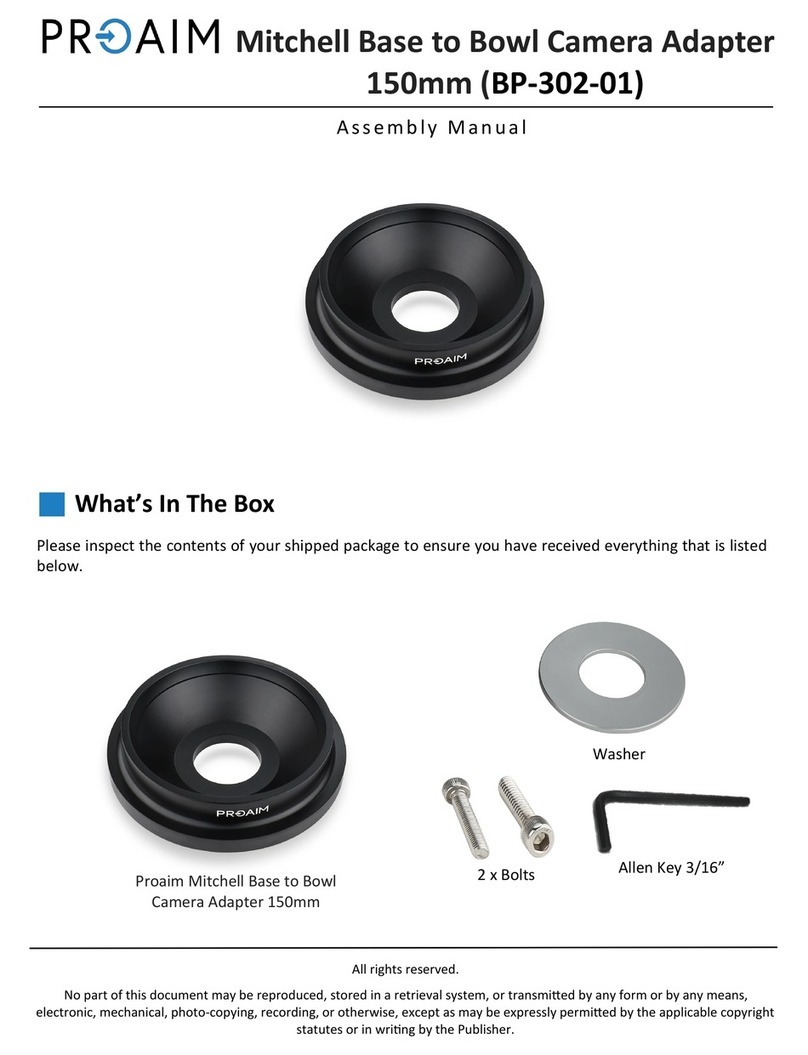
PROAIM
PROAIM BP-302-01 Assembly manual
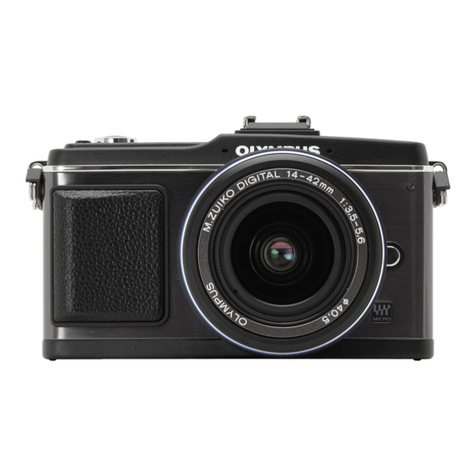
Olympus
Olympus E-P2 - PEN 12.3 MP Micro Four Thirds Interchangeable Lens Digital... instructions
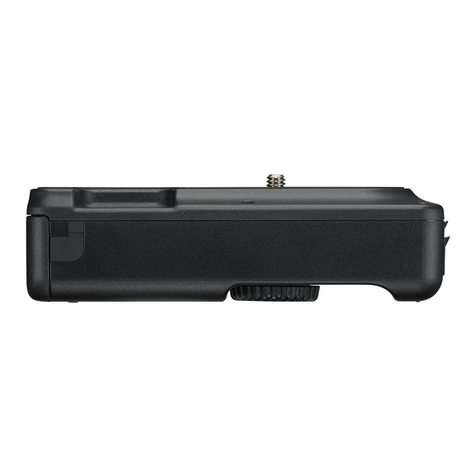
Nikon
Nikon WT-7 user guide

PAG
PAG NPH 9323 instruction manual
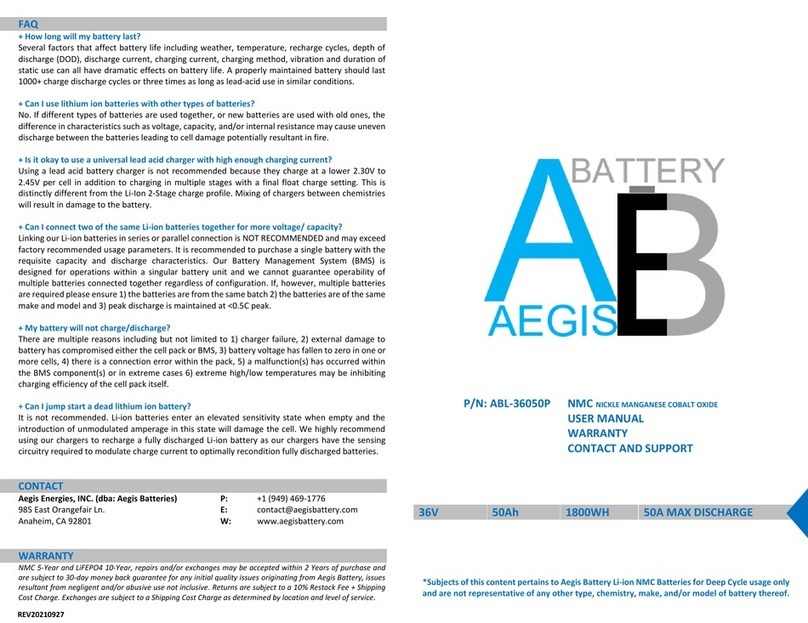
Aegis
Aegis ABL-36050P user manual
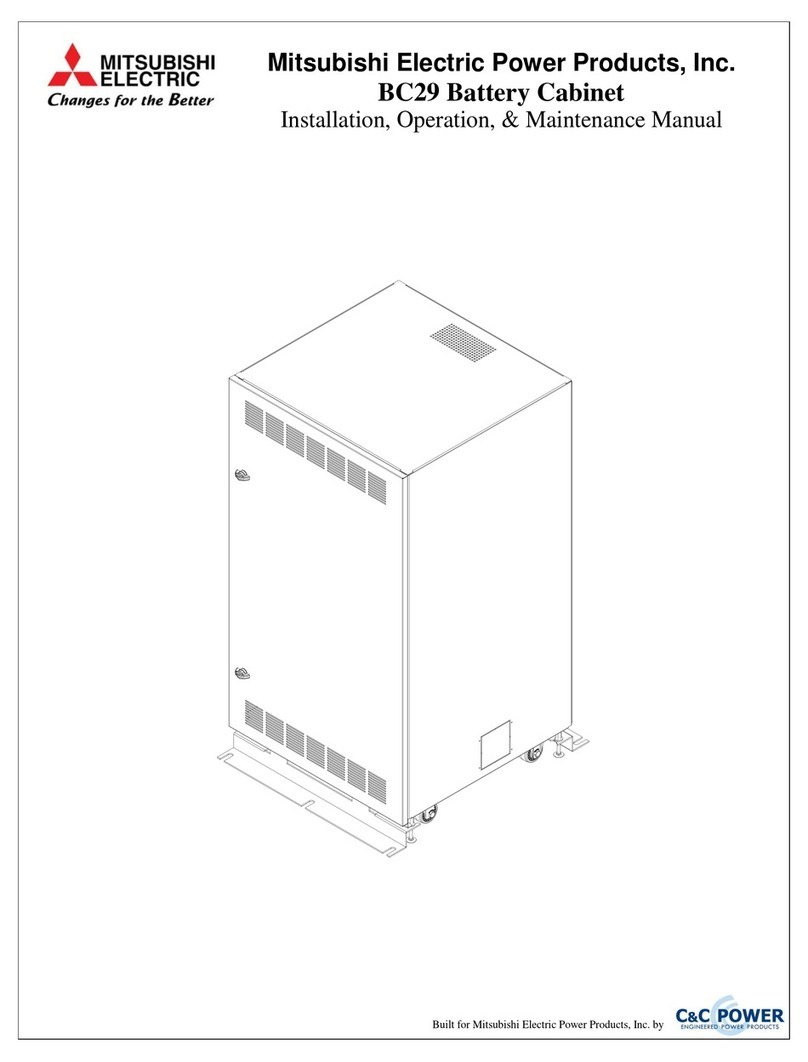
Mitsubishi Electric
Mitsubishi Electric C&C Power BC29 Installation, operation & maintenance manual
